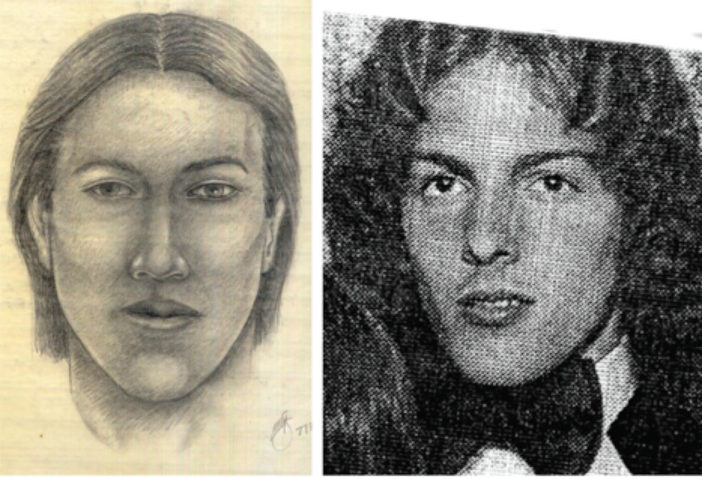Editor’s note: Michael W. Streed is a retired Orange Police sergeant, owner of SketchCop Solutions and author of the book, “SketchCop: Drawing a Line Against Crime.” You can get his book here. Behind the Badge periodically will share excerpts from his book. In this excerpt, Streed writes about the murders of brothers Allan G. Taylor, 22, and Charles D. Taylor, 20, who disappeared from Huntington Beach in March 1978 and whose skeletal remains, dug up from a Riverside County creek bed, were identified in 1995. The brothers, members of a motorcycle gang, were believed to have been fatally shot for stealing motorcycle parts from a rival gang.
…Finally, it was time to see the skulls. At the time, the Coroner’s Office was headquartered in an old mortuary in downtown Riverside. Oare led me to a dank, dimly lit attic area where weathered wood shelves housed long-forgotten evidence and many unidentified skulls.
The room was cold, dusty and smelled like death — a perfect setting for a horror movie.
After our meeting was over, I boxed up the skulls, gathered up the reports and photos, and took them home, where I had a dedicated studio and room to work.
Once there, I laid the pieces out and carefully began a series of steps that I hoped would identify them.
First, I reassembled the skulls.
In a review of the anthropology and pathology reports, I found the victims’ gender and probable build.
For the probable tissue depths of their faces, I referred to a series of charts developed by forensic anthropologists.
Clothing that shrouded the skeletal remains helped me determine that their builds were normal or average.
Age determination would later help me place any facial lines or wrinkles in their appropriate location when rendering the final illustration.
After sketching for several days, I was able to complete renderings of both faces based upon information provided by the forensic clues. Yet, there was still something missing.
The hair. What about their hair? None remained at the scene. It would be up to me to decide what length and style to illustrate.
Referring back to the forensic anthropologist’s report estimating how long they had been buried, I went with the high end of 17 years. Subtracting the time from when the bones were found placed the date of the murders in the mid-1970s.
I pulled my dusty 1976 high school annual from its storage box in my garage. The photos reminded me of the popular male hairstyle of the day — straight, parted in the middle and hanging to the shoulders. I also knew that to be a popular hairstyle with many biker-types I’d encountered over the course of my police career.
I was able finally to finish the drawings of two young men who shared similar facial characteristics and hairstyles.
I scheduled a meeting with Oare so I could return the drawings and photographs.
When I delivered them, he carefully scrutinized them and showed them off to a couple of other investigators. After several quiet moments, he opined that they “looked an awful lot alike.”
I caught a hint of skepticism in his voice, and I flippantly replied, “Who knows, maybe they’re brothers” as I headed out the door.
A news release was created, and the media carried the story of the bones’ discovery. A description of the remains was also included with the sketches I supplied. Clothing details, including the Harley Davidson T-shirt, biker boots and a marijuana leaf “pinky-style” ring, would provide further clues to their identities.
After two years, Oare’s efforts paid off. A recently retired woman had moved to Riverside County and read the story. The sketches and story stirred a vague memory that was triggered by the mention of the distinctive ring. Could they be the bodies of Charlie and Allan Taylor, two acquaintances from years past? She showed the sketches to her son-in-law to confirm her suspicions and then called the Coroner’s Office.
At the same time in Orange County, a retired district attorney’s investigator recalled a murder case he assisted with several years before involving a suspect tried and convicted for the murders of Charles and Allan Taylor, two brothers abducted at gunpoint in Huntington Beach in 1978.
He also called Oare with his suspicions. Meanwhile, I had gone about my business, sketching crooks and catching crooks. I was alerted to the developments in the case one day by a newspaper reporter who called me at home to ask for comment about the identification of the Taylor brothers.
Brothers? I thought back to the offhand remark I’d made to Oare as I was leaving his office that day several months back, and now it all made sense…
 Behind the Badge
Behind the Badge



